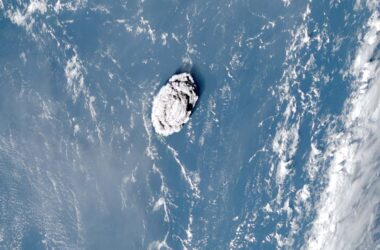Icy waters around the coast of Spitsbergen, Svalbard, in the Arctic Ocean
Stuart Melvin/Alamy
The western Arctic Ocean is undergoing acidification at a rate approximately four times faster than other oceans due to the rapid melting of ice.
Ocean acidification occurs when seawater absorbs carbon dioxide from the atmosphere. As the levels of atmospheric CO2 have increased since the industrial revolution, the acidity of oceans has risen by an average of 30 per cent, leading to widespread consequences for marine ecosystems.
In most ocean basins, the rate of ocean acidification has closely followed the rise in atmospheric CO2 levels. However, the Arctic Ocean, which is cold and covered in ice during winter, exhibits a different trend.
To assess this difference, Wei-Jun Cai and his colleagues examined data collected from 47 expeditions to the Arctic between 1994 and 2020. They analyzed pH levels and the saturation of the mineral aragonite, which influences the ability of organisms like coral and oysters to develop shells. Lower levels of both measures indicate higher levels of acidification.
Their findings revealed that pH levels in the western Arctic decreased on average about four times faster than in other oceans during the same period. Additionally, aragonite saturation decreased three times faster in the western Arctic compared to other oceans. The area of the Arctic Ocean with low pH and low aragonite concentration grew from nearly nonexistent in 1990 to approximately 7 per cent of the entire Arctic Ocean by 2020.
“This changing chemical composition can significantly impact various aspects of the ecosystem,” says Hongjie Wang, a researcher from the University of Rhode Island. She explains that Arctic ecosystems are particularly vulnerable, although the specific effects of acidification relative to other changes such as warming are not yet fully understood.
This study focused exclusively on the western Arctic and did not include the eastern Arctic, which is under Russian control and has limited available data, according to Jens Terhaar from the Woods Hole Oceanographic Institution in Massachusetts.
According to Cai’s research group, the accelerated rate of acidification is primarily driven by melting ice. As ice melts, newly exposed seawater absorbs more CO2 from the atmosphere. The meltwater also dilutes compounds that typically buffer absorbed CO2 and reduces the mixing between the surface and deep ocean layers. Cai explains that when sea ice melts, it creates a floating freshwater lake on top of the ocean surface, contributing to increased acidification. This trend is expected to continue as long as there is summer ice to melt.
Terhaar suggests that disappearing sea ice is also a contributing factor to the higher rate of acidification. However, he acknowledges that other factors may be involved, particularly in the eastern Arctic region where the influence of rivers flowing into the ocean from Siberia is likely more significant.
Topics:








